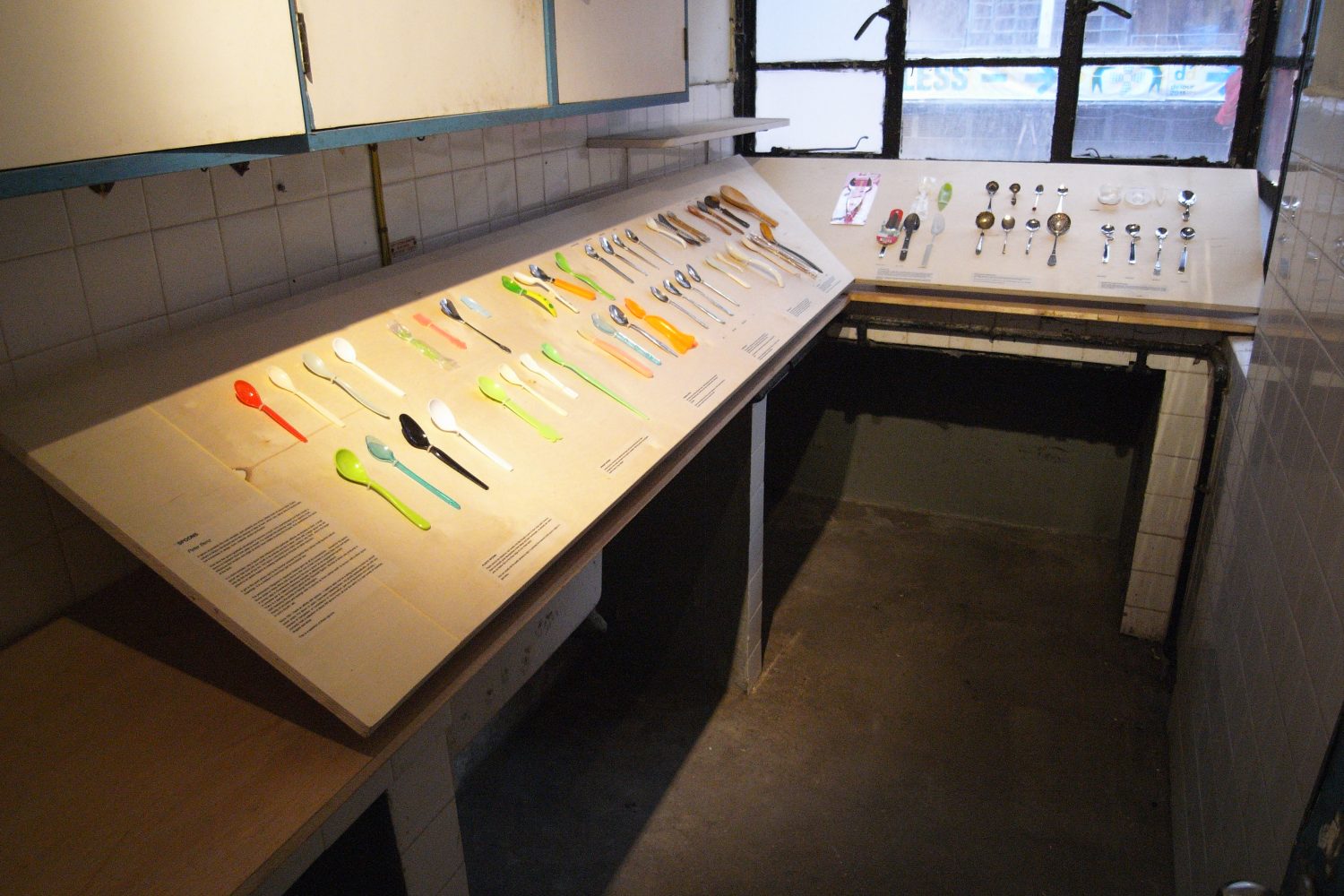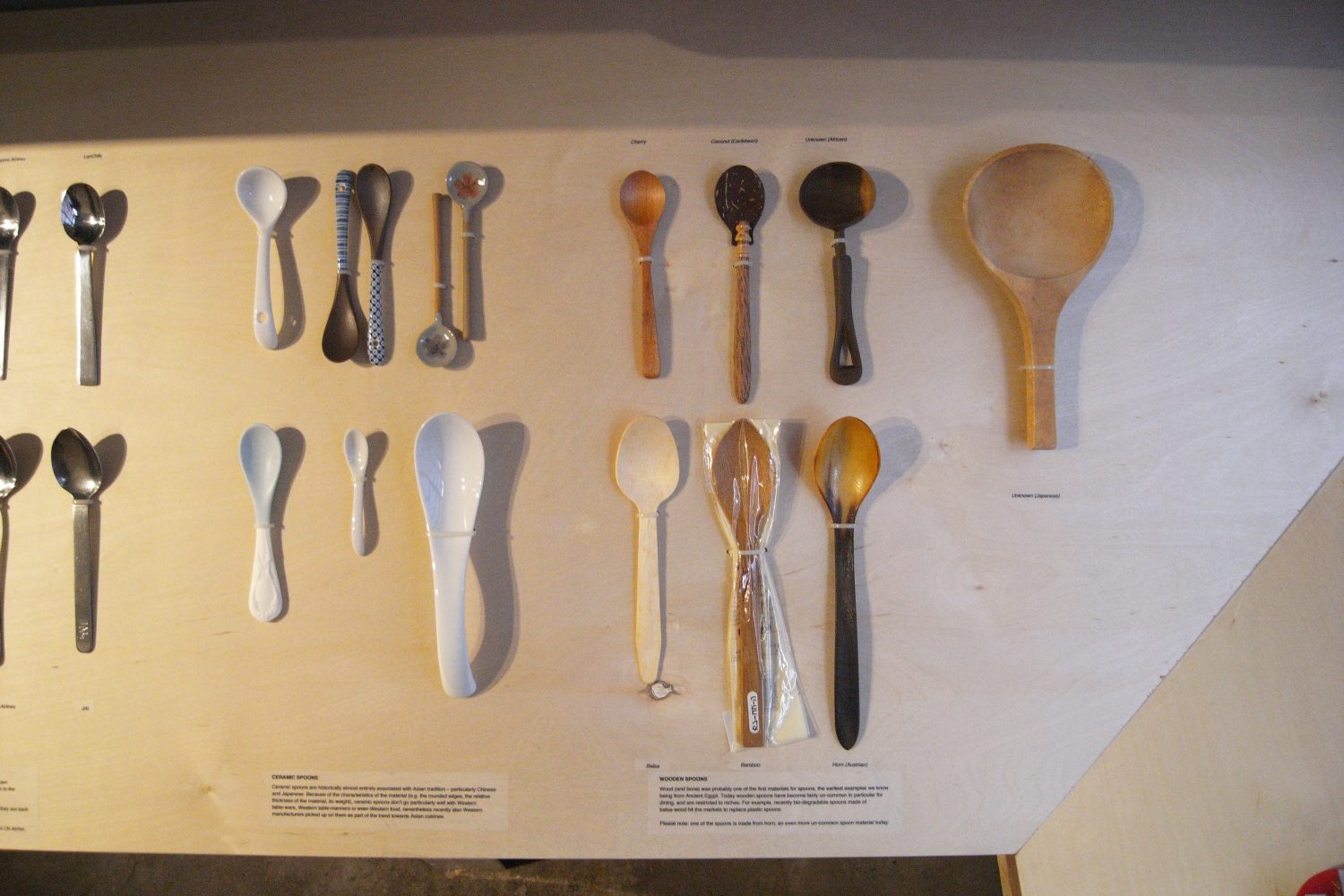A spoon is possibly the most versatile, and certainly one of the oldest tools of human kind. Every culture in history developed spoon-like devices to take in food, which vary rather little in functionality, but immensely in design, form, material, and/or production.
The characteristics of a spoon influence the particular attitude we develop to food. The spoon (=the tool) turns mere ‘nutrition’ into ‘food’, and in the larger picture is an active means of creating something as intricate as table manners: a small spoon we may suck into our mouth in its entirety and lick it clean, while with a larger spoon we will only sip the soup of the rim.
Over time, the spoon developed complex multi-layered cultural meanings. It’s a medium in more than just its obvious function:
– Some tribes in West-Africa nail a spoon to the roof of their houses to protect them from evil spirits;
– A young Lapp in Scandinavia will present his love a spoon as an engagement-symbol;
– A complete set of cutlery in Germany includes 18 different spoon variations; or
– There is a specific merchandise genre of the ‘Souvenir Spoon’, the first of which was produced in 1890 featuring the profile of George Washington.
Since 1991, I have an affinity to spoons – I used to wear one on a string around my neck for almost seven years. For about 25 years I have been collecting them, not strictly systematically, not with any intention of ‘completeness’, ‘consistency’, or ‘conservation’, just out of fascination and curiosity. I currently hold a collection of about 200 spoons from all over the world, in a vast variety of materials, shapes and sizes.
This exhibit put together a selection of these spoons:




